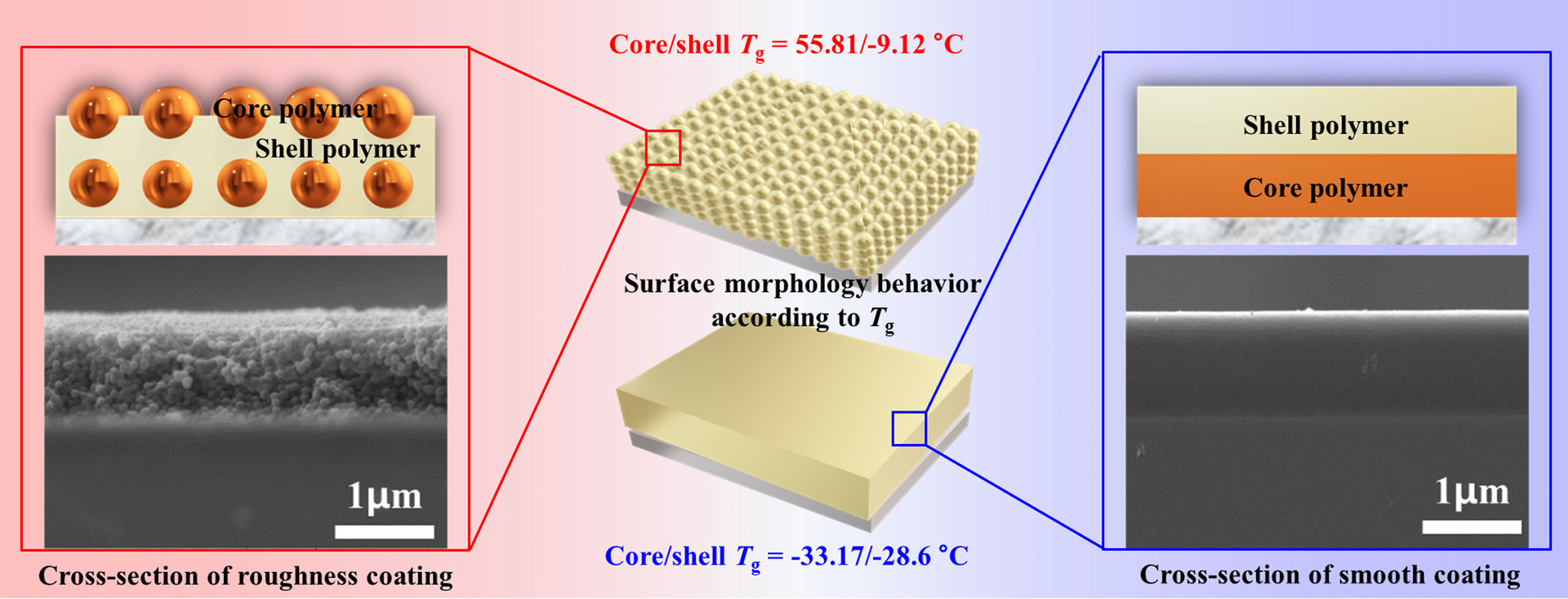
[논문/Progress in Organic Coatings] Wetting properties and morphological behavior of core-shell polymer-based nanoparticle coatings
작성자
관리자작성일자
2022-01-03 09:57조회수
89KIURI 국준원 참여연구원 논문
Progress in Organic Coatings. 2021 Nov 11; doi: 10.1016/j.porgcoat.2021.106606.
Wetting properties and morphological behavior of core-shell polymer-based nanoparticle coatings
The glass transition temperature (Tg) strongly affects the physicochemical properties of a polymer. In particular, coating a material with polymer nanocapsules with two or more Tg values can endow the material with variety of properties. We introduced polymer nanocapsules onto glass substrates and analyzed the effect of polymer Tg on the surface properties of the coating. Core-shell polymer (CSP) particles were prepared by a two-step emulsion polymerization procedure using poly(methyl methacrylate) (PMMA, Tg = 105 °C) and poly(butyl acrylate) (PBA, Tg = −54 °C) in different ratios as cores, and poly(nonafluorohexyl acrylate) (PNFHA, Tg = −6 °C) as shells. The microstructural and microbehavioral properties of the coating surface were found to depend on the Tgs of the synthesized CSP. Surface elemental distributions and chemical bonding were analyzed by XPS depth profiling to determine the behavior of the CSP nanoparticles. A core/shell nanoparticle with Tg = 55.81/−9.12 °C has a high probability of its core becoming located at the coating surface. On the other hand, a core/shell nanoparticle with Tg = −33.17.81/−28.6 °C has a high probability of its shell becoming located at the surface. Because the shell has a low surface energy, test solutions with a variety of surface tensions exhibited low wettabilities. These results allow the Tg values of the CSP to access the final thermodynamic equilibrium state, reveal that the Tg values affect the surface distribution of the functional groups of the coatings, which in turn determine its surface morphology and wetting properties.
